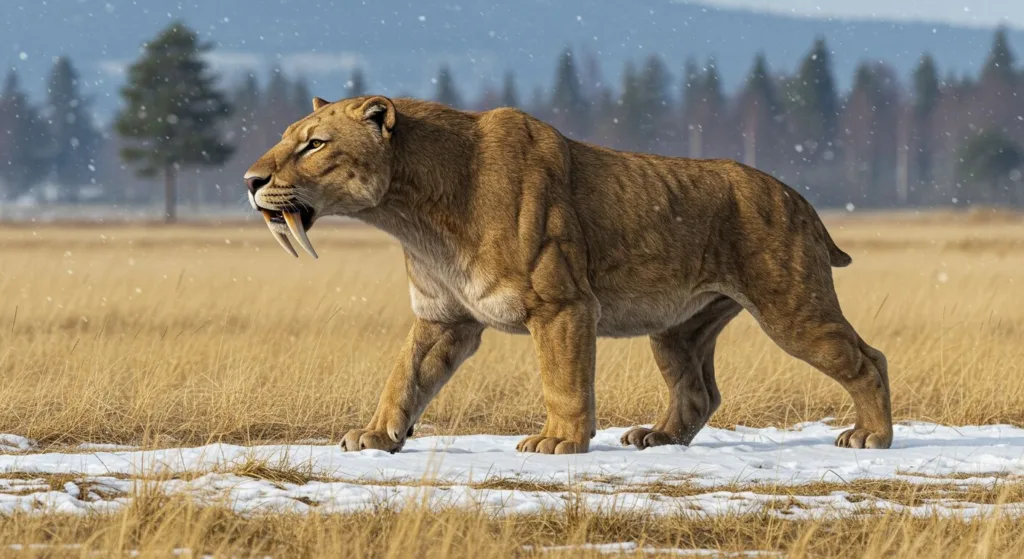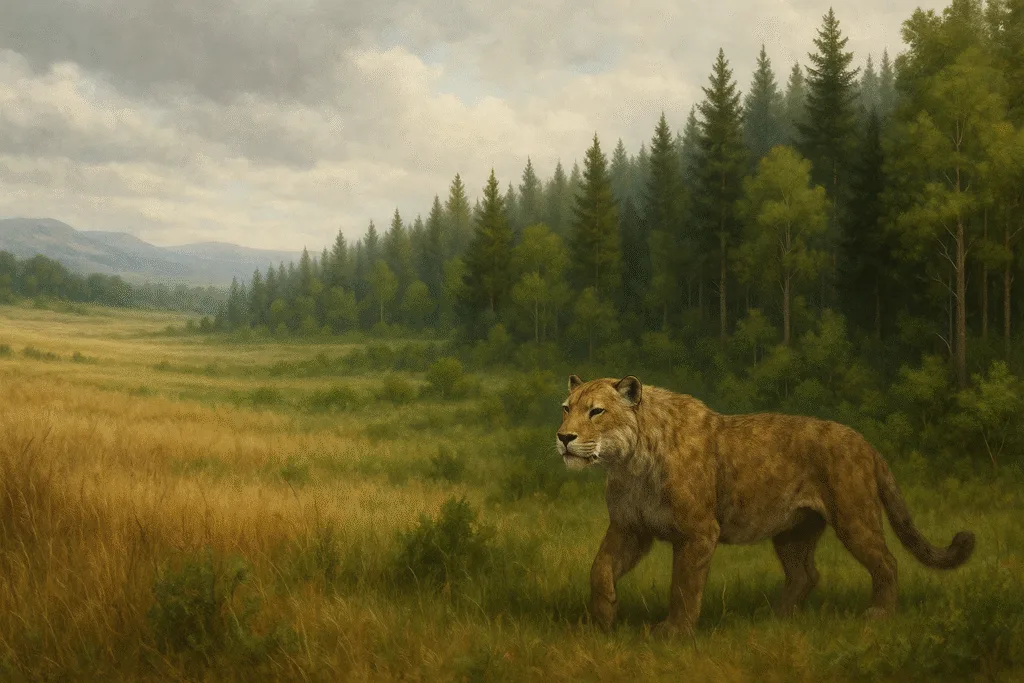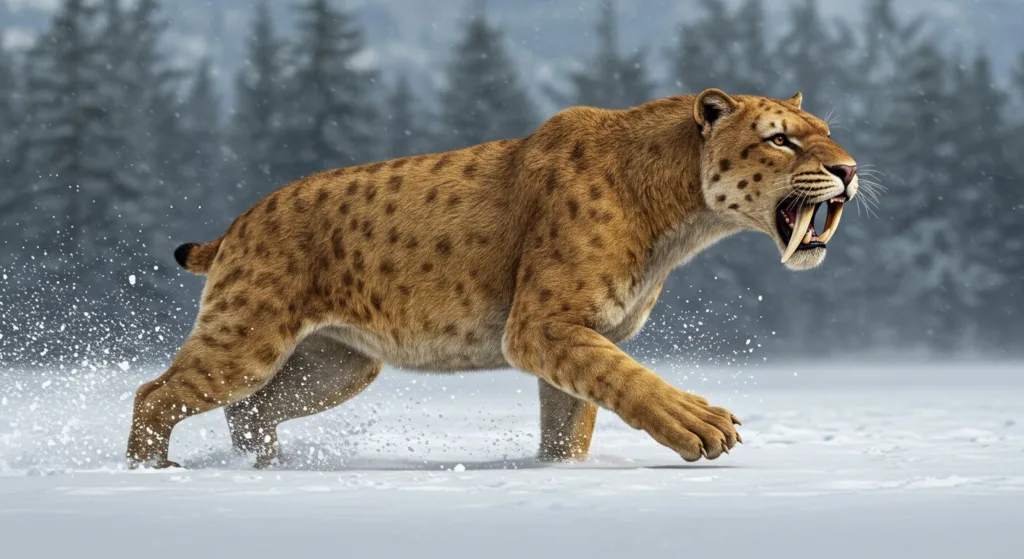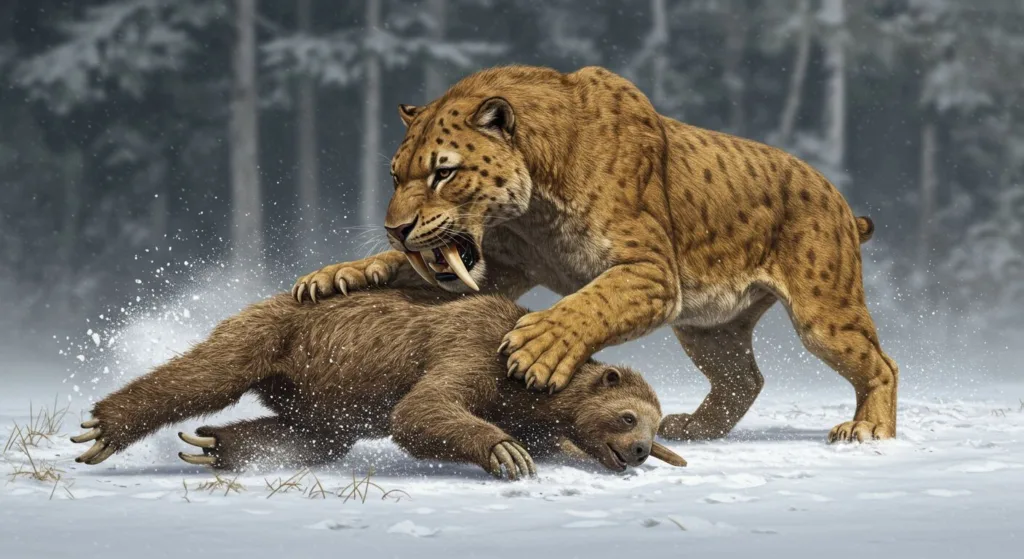The Saber-tooth tiger has been of very much interest due to its unique appearance. They are the prehistoric mammals who belonged to a group of cats called Smilodon. About 2.5 million years to 10,000 years ago, they came into existence in the United States during the ice age. Saber-tooth tigers, just like other animals, started their lives inside their mother’s bodies for 3 to 4 months. The modern cats’ gestation period is also 3 to 4 months. It means they resembled big cats to some extent.
The genus was named in 1842 based on fossils from Brazil. Their generic name means “two-edged knife” due to the teeth. Basically, Saber-tooth tigers were the descendants of Saber-tooth cats. They were not tigers, and there was no resemblance between present-day tigers and them. The most prominent feature was their long and curved teeth, daggers, or sabers and they were called hunters because they hunted large animals with their teeth. Their teeth were 14 cm long and might reach 28cm, sharp as a blade to catch the prey conveniently.
Paleontologists have been working for years to find out the reasons for their extinction. We will dig into the major causes of Saber-tooth tigers’ deaths below.

What happened to the Saber-Tooth Tiger?
The Saber-tooth tigers lived with lions in America during the Pleistocene Epoch. This group of animals also known as Megafauna went to extinction. This extinction took place in North America and is referred to as Quaternary extinction. Scientists revealed many reasons why these tigers actually went extinct.
These reasons include environmental changes, prey population decline, human activities, and low food supply which are discussed below.
Changes in Climate:
The glaciers began receding in the extinction period. Over a 5000-year period, the temperature became high up to 6 degrees which resulted in the evolution of large animals. This temperature affected the vegetation and turned grasslands into forests. The temperature rise resulted in the extinction of Saber-tooth tigers.

Food supplies dried up:
The Smilodon relied on animals like bison and deer and went to extinction due to many climate changes and also the population drop. Bison deer number dropped with the transformation of grasslands into forests which resulted in a reduction of food resources. Due to the low supply of food, the Saber-tooth tiger went extinct. Human hunting pressure and competition for food resources are also one of the causes of extinction.
Genetic factors:
Some species with low diversity are at greater risk of extinction due to less ability to adapt to changing environmental conditions. So, the species move towards destruction because it can’t face the challenges of the environment. That’s why, the Saber-tooth tiger went extinct.
The Saber-tooth tiger being haunted:
Saber-tooth tiger became haunted when the early human group called the Clovis tribe came to America. Humans didn’t hunt the saber-toothed tiger for food but may have killed them for their protection. Humans started hunting animals on which the Saber-tooth tigers fed, which also resulted in a food shortage for these tigers.

Who found the Saber-tooth tiger?
In 1842, a Danish naturalist Peter Wilhelm Lund named the first Smilodon fossils from Brazil.
The first Smilodon fossils were found in a cave in Texas and were given a name by an American Paleontologist Joseph Leiby in 1869. However, some researchers claimed that a Mississippi man found fossilized remains of a Saber-tooth tiger 10000 years old.
Did humans live with Saber-tooth tigers?
Early humans shared the land space with several gigantic predators like Saber-tooth tigers, cats, and dire wolves during the Pleistocene epoch. All these animals competed for food and water. The ancient humans hunted the Saber-tooth tiger. But this topic is controversial. There is no clear evidence that the Saber-tooth tigers were actively hunted by early humans. It is said that the Saber-tooth cats which resemble Saber-tooth tigers went extinct between 8,000 and 10,000 years ago.
Could Saber-tooth tigers still exist?
No, the Saber-tooth tigers could not exist now. They went to extinction about 10,000 years ago and their fossils have been found all over North America and Europe. It is said that the Saber-tooth tiger relied entirely on large animals for food. But those animals also became extinct, so the Saber-tooth tigers could not exist due to their reliance on those animals and also due to their extinction. There are no descendants of Saber-tooth tigers alive today.
Did Saber-tooth tigers live in Asia?
The Saber-tooth tigers did not live in Asia. They roamed in Europe and North America throughout the Miocene and Pliocene Epochs.
Do the Saber-tooth tigers still exist?
No, Saber-tooth tigers don’t exist as they went to extinction about 10,000 years ago.
Saber-tooth tiger’s teeth aided in hunting
Saber-tooth tigers had weak jaw muscles which helped them to open their mouth to 110 degrees. It seems curious because the present-day lions can unbolt their mouth about 65 degrees which is enough extension to catch and kill the prey. Paleontologists argued that there must be different techniques to kill the prey. A hypothesis claims that Saber-tooth tigres cut the blood vessels of prey’s neck to tackle.

How powerful were the Saber-tooth tiger bites?
The Saber-tooth tigers didn’t possess powerful bites as compared to their teeth. The bite force is about 1000 Newtons for a 230 kg specimen. According to a hypothesis, their one bite is one-third of a powerful lion’s bite. They tackled the prey with their forelimbs and their curved sharp teeth. The studies regarding Saber-tooth tigers revealed that they had very strong neck muscles and weak muscles of the jaw that helped them in hunting their prey.
FAQs
Did humans hunt saber-tooth tigers?
There is no strong evidence of direct hunting. However, humans hunted the same prey animals, which increased competition for food.
What did the saber-tooth tiger eat?
They mainly hunted large herbivores like bison, camels, horses, and young mammoths.
Why are their teeth so long?
Their long canines helped deliver precise killing bites to the neck of large prey animals.

